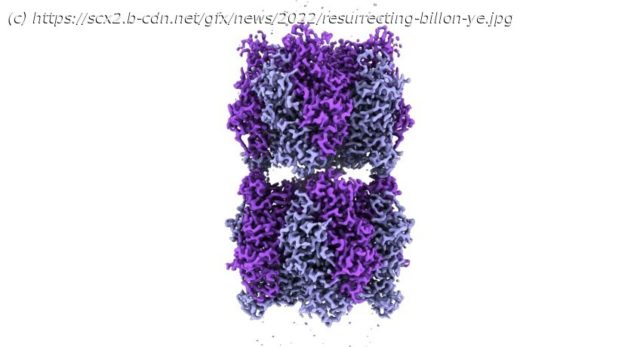The central biocatalyst in photosynthesis, Rubisco, is the most abundant enzyme on earth. By reconstructing billion-year-old enzymes, a team of Max Planck Researchers has deciphered one of the key adaptations of early photosynthesis. Their results, now published in Science, not only provide insights into the evolution of modern photosynthesis but also offer new impulses for improving it.
October 14, 2022
The central biocatalyst in photosynthesis, Rubisco, is the most abundant enzyme on earth. By reconstructing billion-year-old enzymes, a team of Max Planck Researchers has deciphered one of the key adaptations of early photosynthesis. Their results, now published in Science, not only provide insights into the evolution of modern photosynthesis but also offer new impulses for improving it.
Present day life fully depends on photosynthetic organisms like plants and algae that capture and convert CO2. At the heart of these processes lies an enzyme called Rubisco that captures more than 400 billion tons CO2 annually. Organisms alive today make staggering amounts of it: the mass of Rubisco on our planet outweighs that of all humans. In order to assume such a dominant role in the global carbon cycle, Rubisco had to adapt constantly to changing environmental conditions.
Using a combination of computational and synthetic approaches, a team from the Max-Planck-Institute for Terrestrial Microbiology in Marburg, Germany in collaboration with the University of Singapore has now successfully resurrected and studied billion-year-old enzymes in the lab. In this process, which they describe as “molecular paleontology,” the researchers found that instead of direct mutations in the active center, an entirely new component prepared photosynthesis to adapt to rising oxygen levels.
Rubisco’s early confusion
Rubisco is ancient: it emerged approximately 4 billion years ago in primordial metabolism prior to the presence of oxygen on earth. However, with the invention of oxygen-producing photosynthesis and rise of oxygen in the atmosphere, the enzyme started catalyzing an undesired reaction, in which it mistakes O2 for CO2 and produces metabolites that are toxic to the cell.






